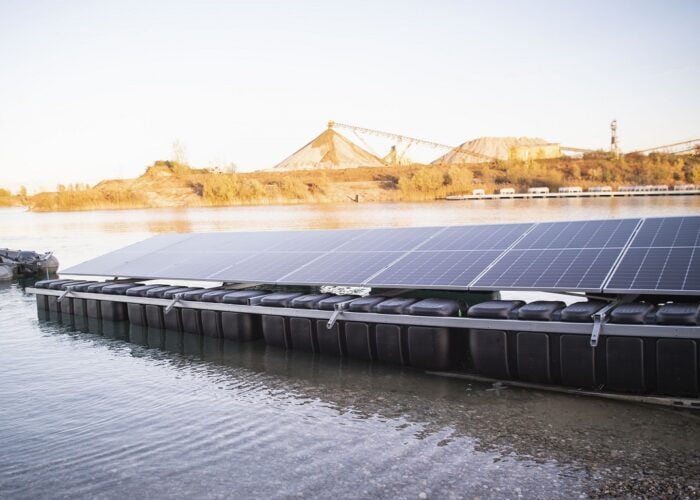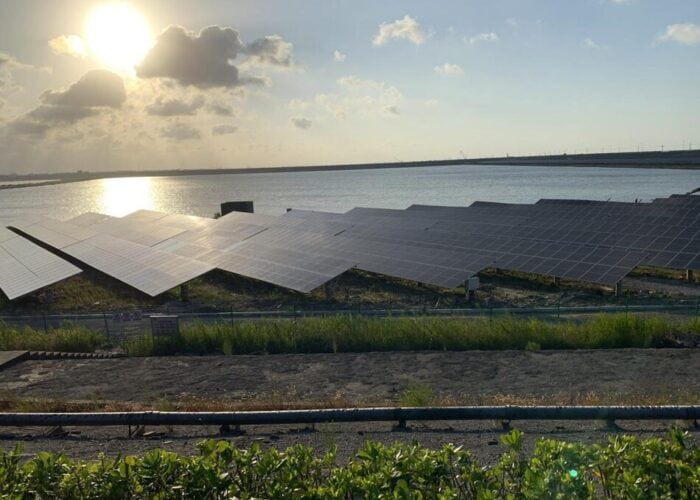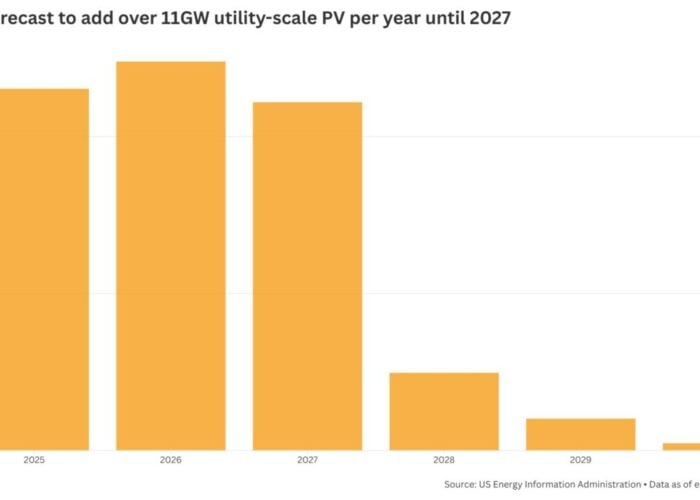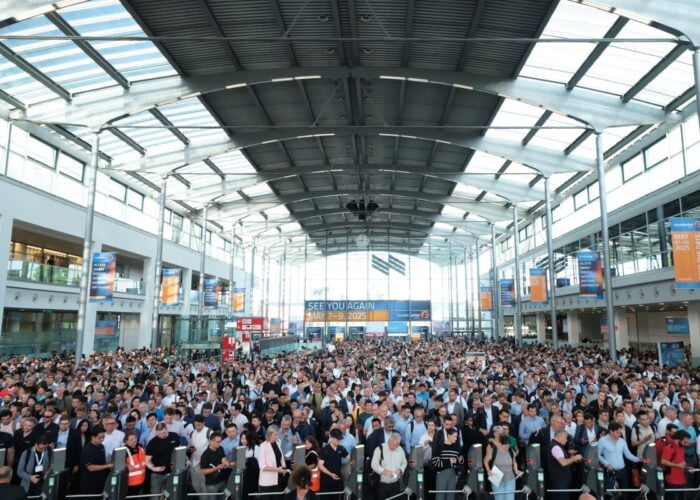
Europe’s solar sector exceeded 800,000 full-time equivalent jobs for the first time in 2023, following record-breaking installation figures last year.
These are the headline takeaways from this year’s ‘Solar Jobs Report’, published by European trade body SolarPower Europe. The report notes that Europe’s addition of 60.9GW of new solar power capacity in 2023, a 50% increase over the 40.4GW of capacity added in 2022, helped create a significant demand for new jobs in the European solar space, particularly in the deployment sector.
Unlock unlimited access for 12 whole months of distinctive global analysis
Photovoltaics International is now included.
- Regular insight and analysis of the industry’s biggest developments
- In-depth interviews with the industry’s leading figures
- Unlimited digital access to the PV Tech Power journal catalogue
- Unlimited digital access to the Photovoltaics International journal catalogue
- Access to more than 1,000 technical papers
- Discounts on Solar Media’s portfolio of events, in-person and virtual
Or continue reading this article for free
The organisation notes that this is both the largest year-on-year increase in annual capacity addition growth rate since 2018 and the largest absolute market growth on record. As of the end of 2023, European companies offered over 700,000 full-time equivalent jobs in the deployment sector to meet this demand, around 87% of the continent’s total jobs in the solar industry, as shown in the graph below.
Similarly, the number of jobs in the operations and maintenance (O&M) space has almost doubled in the last four years, increasing from 35,821 in 2020 to 61,246 in 2023, reflecting a greater need for skilled workers to manage the sheer number of solar projects currently in operation in Europe.
However, other sectors of the European solar industry have shown less encouraging growth, and even decline. Decommissioning and recycling saw a significant decline in the number of jobs available, falling from 14,193 in 2020 to just 6,981 in 2023; while this could be interpreted in a positive light, as an indication of the need for jobs in the maintenance of existing and installation of new solar projects, rather than the closure of older facilities, the fact that Europe does not have a strong pipeline of decommissioning positions is of concern for the long-term future of the sector.
More immediately, the slight decline in the number of manufacturing jobs available, from a peak of 48,229 in 2022 to 43,175 in 2023, is an ominous sign for the European manufacturing sector. Much has been made of the challenges associated with developing a robust PV manufacturing industry in Europe, and despite the passage of legislation to encourage such investments, such as the Net Zero Industries Act (NZIA), the combination of a decline in manufacturing jobs and Meyer Burger’s recent operational troubles will inspire little confidence in European PV manufacturing.
Job additions slow as capacity additions decline
Much of the scepticism surrounding the future of European solar is borne out in SolarPower Europe’s job figure forecasts. The trade body makes a number of forecasts for the next five years of European solar employment, based on three scenarios: a low scenario, in which only “serious expansion plans” are realised; a medium scenario, in which “most” of the currently-announced manufacturing facilities are commissioned; and a high scenario, in which additional manufacturing capacity is announced and commissioned, to realise the annual manufacturing capacity target of 30GW set out by the European Solar PV Industry Alliance (ESIA).
Looking at the medium scenario, as this is the scenario SolarPower Europe expects is most likely to occur, the trade body expects Europe’s jobs in the deployment space to decline, year-on-year, falling to around 700,000 by the end of next year. As was the case in the year-on-year change between 2022 and 2023, much of this is tied to SolarPower Europe’s capacity addition forecasts, with the group expecting a dramatic slowdown in year-on-year capacity additions, with Europe set to add just 5% more new solar capacity in 2024 than it did in 2023.
As a result, deployment jobs, which have been the backbone of the European solar employment industry, are expected to decline, even as jobs in decommissioning and O&M increase year-on-year. These forecasts are shown in the graph below.
By 2028, SolarPower Europe’s medium scenario is a little more encouraging, with the sector supporting more than 800,000 jobs in deployment in both 2027 and 2028. The number of jobs in place in all three profiled industries is also expected to increase, although SolarPower Europe’s medium scenario does not expect decommissioning and recycling jobs to reach the level seen in 2020 by 2028, expecting just 13,163 jobs in place by 2028, again raising questions about the long-term health of the sector.
Notably, SolarPower Europe’s forecasts become more extreme the farther away they are from the present day. In its 2024 forecasts, the number of jobs in the European solar sector is expected to range from as low as 680,000 in the low scenario to a peak of 970,000 in the high scenario.
By 2028, this range is thought to expand to a low of 680,000 in the low scenario to a peak of 1.4 million in the high scenario, suggesting that there is a considerable lack of clarity in the European solar jobs sector’s long-term outlook, at a time where the continent is approaching many of its more ambitious climate deadlines. In addition to the ESIA manufacturing capacity target, for instance, SolarPower Europe expects Europe to deploy around 626GW of solar capacity by the end of the decade.
However, according to SolarPower Europe, the EU has the potential to install as much as 902GW of capacity. Therefore, the continent will need to continue to grow its pool of workers if it is to meet these targets.
Growth in O&M and manufacturing
SolarPower Europe’s latest report also suggests that the makeup of the European solar employment space will change considerably over the next six years. While deployment jobs are still expected to account for the majority of total jobs between 2023 and 2028, the percentage of jobs in the deployment space will decline from 87% as of last year to 79% as of 2028.
Conversely, the contribution of O&M and manufacturing jobs to Europe’s total solar employment figures are expected to increase by four percentage points each, with O&M jobs accounting for 11% of Europe’s solar landscape by 2028, and manufacturing jobs making up 9% of all jobs. These trends are shown in the graph below.
SolarPower Europe notes that supportive regulatory policies will be essential in shaping Europe’s solar job landscape in the coming years, most notably in encouraging and training more workers to take up positions in the critical manufacturing sector. The body calls for clearer career paths for those in the solar sector, and asks the EU to develop an “electrification skills” plan as part of its Electrification Action Plan—the policy to expand the electrification of Europe’s grids. There is the potential for skill transfer between, for instance, workers in the heat pump installation space and the solar project deployment space.
The trade body also calls for greater training and retraining opportunities, particularly for those in the fossil fuel industries, whose skills could be transferred to the clean energy space in general, and the solar space in particular.
Figures from the International Energy Agency (IEA), for instance, published in 2023, forecasted that by 2030, the world could lose 6.2 million workers due to contractions in the fossil fuel and internal combustion engine vehicle sectors alone, and an industry such as solar, where there are significant deployment targets but a lack of manufacturing capacity to meet these targets, could certainly benefit from workers with experience of working in the energy industry.







